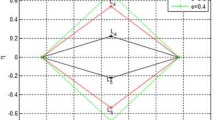Abstract
The fast spinning B-star Regulus has recently been found to be orbited by a fainter companion in a close circular path with orbital period P b=40.11(2) d. Being its equatorial radius R e 32% larger than the polar one R p, Regulus possesses a remarkable quadrupole mass moment Q. We investigate the effects of Q on the orbital period P b of its companion in order to see if they are measurable, given the present-day level of accuracy in measuring P b. Conversely, we will look for deviations from the third Kepler law, attributed to the quadrupole mass moment Q of Regulus, to constrain the ratio γ=m/M of the system’s masses. The impact of Q on the orbital period is analytically worked out with a straightforward perturbative approach. The resulting correction P Q is compared to other competing dynamical effects. P Q and the Keplerian period P Kep are expressed in terms of the phenomenologically determined system’s parameters; γ is treated as an unknown. P Q is compared to the observational accuracy in measuring the orbital period δ P b=0.02 d and to the systematic uncertainty δ(P Kep) due to the errors in the system’s parameters entering it. The discrepancy ΔP=|P b−P Kep| is examined in order to see for which values of γ it becomes statistically significant. The physical meaning of the obtained range of values for γ is discussed in terms of Q. P Q is larger than δ P b but still smaller than the systematic uncertainty in P Kep by two orders of magnitude. The major sources of bias are the velocity semiamplitude K of the motion of the primary and its mass M. Assuming edge-on configuration, i.e. i=90 deg, if γ≳0.096 Q would be positive, i.e. Regulus would be prolate, contrary to the observations. If γ≲0.078 Q would be negative, but its magnitude would be one-two orders of magnitude larger than the approximate estimate Q≈M(R 2p −R 2e )=−2.4±0.5×1049 kg m2. Regulus is the first extrasolar binary system in which the orbital effects of the asphericity of the primary are larger than the observational sensitivity; moreover, no other competing aliasing orbital effects are present. Thus, it is desirable that it will become the object of future intensive observational campaigns in order to reduce the systematic uncertainty due to the system’s parameters below the measurability threshold.
Similar content being viewed by others
References
Damour, T., Deruelle, N.: Ann. Inst. H. Poincaré 44, 263 (1986)
Domiciano de Souza, A., et al.: Astron. Astrophys. 407, L47 (2003)
Gies, D.R., et al.: Astrophys. J. Lett. 682, L117 (2008)
Gray, R.O., et al.: Astron. J. 126, 2048 (2003)
Iorio, L.: Astrophys. Space Sci. 315, 335–340 (2008)
Johnson, H.L., Morgan, W.W.: Astrophys. J. 117, 313 (1953)
Laarakkers, W.G., Poisson, E.: Astrophys. J. 512, 282 (1999)
Kervella, P., Domiciano de Souza, A.: Astron. Astrophys. 474, L49 (2007)
Kervella, P., et al.: Astron. Astrophys. 484, L13 (2008)
McAlister, H.A., et al.: Astrophys. J. 628, 439 (2005)
van Belle, G.T., et al.: Astrophys. J. 559, 1155 (2001)
van Leeuwen, F.: Hipparcos, the New Reduction of the Raw Data (ASSL 350). Springer, Dordrecht (2007)
Author information
Authors and Affiliations
Corresponding author
Rights and permissions
About this article
Cite this article
Iorio, L. The impact of the oblateness of Regulus on the motion of its companion. Astrophys Space Sci 318, 51–55 (2008). https://doi.org/10.1007/s10509-008-9889-1
Received:
Accepted:
Published:
Issue Date:
DOI: https://doi.org/10.1007/s10509-008-9889-1



